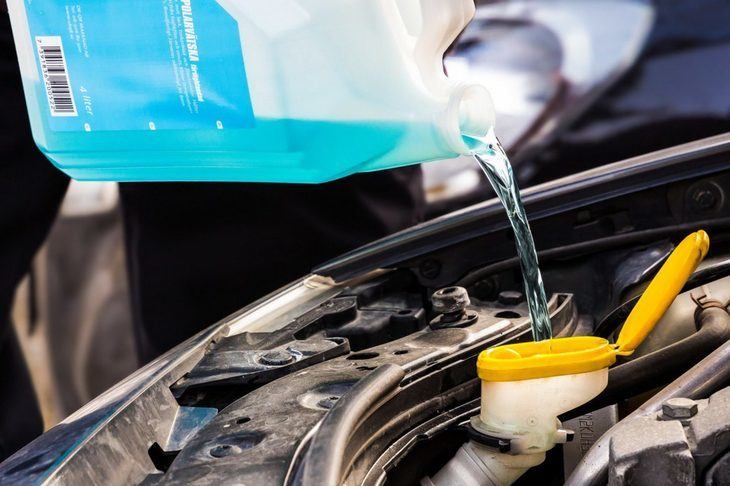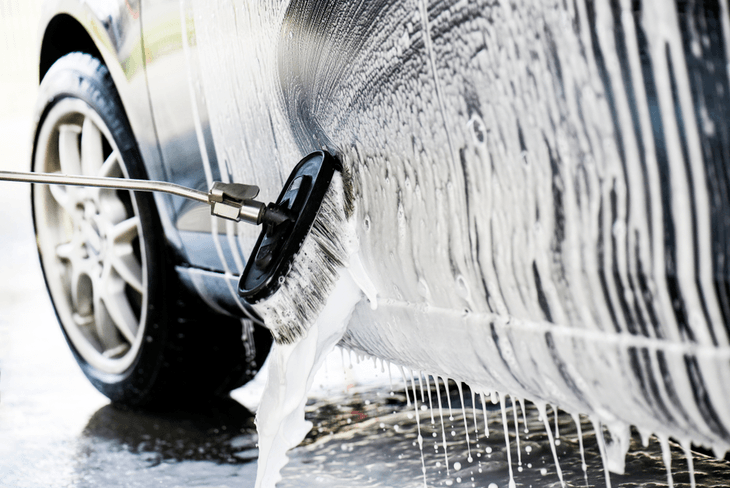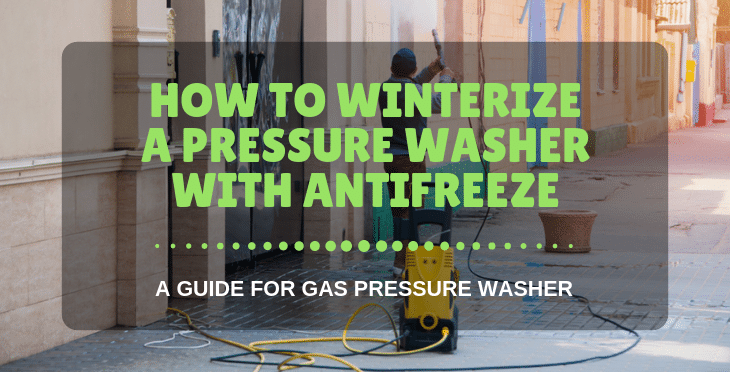How To Winterize A Pressure Washer With Antifreeze (Quick Guide 2020)
If you buy an item via links on this page, we may earn a commission. Our editorial content is not influenced by commissions. Read the full disclosure.
Winter is here. It’s time to protect your pressure washer from the harsh weather. If you don’t know how to winterize a pressure washer with antifreeze, read here!
Why should you learn how to winterize pressure washer? The main reason for this is to make sure your pressure washer machine still works the next time you need it.
It doesn’t matter whether you have a residential unit like that of Sun Joe, Stanley, Karcher, and Blue Clean, or you have a commercial pressure washer machine from brands like Craftsman, Northstar, Generac, Hotsy, and Champion. Knowing how to winterize a pressure washer with antifreeze is a skill worth learning.
And the best thing is,
I’ll share easy steps that even first-timers can easily understand!
Also, please note that this guide is specifically for gas pressure washers only.
Ready? Let’s get started!

Just like cars, pressure washers need a fuel stabilizer to preserve the machine and prevent the gas tank from freezing
How To Winterize Pressure Washer Gas-Powered
If you own a gas pressure washer, there are 18 easy steps to follow. I usually group the steps into 3 phases (A, B & C).
Here are the 3 phases of how to winterize my pressure washer:
A. Before The Antifreeze Application
1. Turn the pressure washer machine to STOP position.
2. Make sure to turn off water supply, as you detach and drain the pressure washer hose, wand, gun, nozzle, and detergent tank (if the detergent tank is removable).
3. If your pressure washer has a built-in detergent tank, make sure to remove the cleaning solution and drain any leftover detergent.
4. Now get an old garden hose (not the pressure washer hose) and connect it to the pump inlet like you normally would.
5. Turn the pressure washer ON for a few minutes to wash out any detergent left in the pump system.
6. After which, you need to turn off the water supply and the pressure washer again.
7. This time, you have to pull the trigger to drain all the water left in the system. You can do 5 to 10 pulls for this, but not more. Then disconnect the hose from the pressure washer.
B. During The Antifreeze Application
8. If you’re confident that no water is left in the pump’s system, its time to add the antifreeze solution.
Want to know the best non-toxic antifreeze for pressure washers?
Winterize pressure washer with RV antifreeze instead! Though on its own, it won’t provide anti-rust protection, it’s a great non-toxic antifreeze. It works really well with pressure washer since it goes through the machine’s water lines, not in the engine. Furthermore, this is a lot cheaper too!
9. Switch the pressure washer motor ON and let it run for a few minutes.
10. Pour the antifreeze solution into a float tank.
But what if I don’t have a float tank?
Some people use an automotive funnel with a hose attachment instead. Using a funnel is easier since you can directly connect the hose to the pump’s inlet. However, this would most likely mean that you need to assemble the funnel yourself since most funnels don’t come with a hose attached.
For those, who have a detergent suction hose already, I suggest you just use what you have rather than spending money on a funnel. It saves you time and effort, too.
11. Connect the detergent suction hose to the pressure washer and immerse the other end in the float tank with antifreeze solution.
12. Set the detergent suction valve to a high position (if your pressure washer unit has a control setting). This step will protect the detergent line of your unit from freezing but not the entire pump.
13. To complete the antifreeze pump protection, allow the antifreeze solution to emerge from the machine outlet. This indicates that the antifreeze solution has passed through the pump system before it emerged out of the machine.
14. After the last drop of antifreeze solution has come out, switch the pressure washer machine to STOP position.
C. After The Antifreeze Application
15. For the last part, you need to drain any gas left in the pressure washer tank.
16. As gas can gum up and obstruct the lines when the temperature is low, add a fuel stabilizer to the gas tank and run the engine for 2 minutes to allow circulation of the stabilizer through the system.
17. Then switch OFF the engine.
18. Lastly, add fuel stabilizer to your gas storage container so that you can still use the remaining gas for the next pressure washer operation.

If you are fond of foam washing, then it is a must that you drain all traces of the soap or detergent first before adding the antifreeze
Conclusion
How to winterize a pressure washer with antifreeze seems like a complicated task to do. But with the right knowledge and easy steps to follow, this task is just a piece of cake.
Don’t panic that winter is here again, and you didn’t have the time to winterize power washer with antifreeze. Just follow the 18 easy steps mentioned above and you’re good to go. This step-by-step guide can be done in less than an hour.
Try it. And let us know what you think!
If you own an electric pressure washer, please refer to the machine’s manual for reference, as some brands have their own frost care kit to help you winterize the unit.
Got a Karcher pressure washer? Check out this video:
TOP 5 most viewed articles in month
In compiling a top-5 list of this month's most popular articles:

